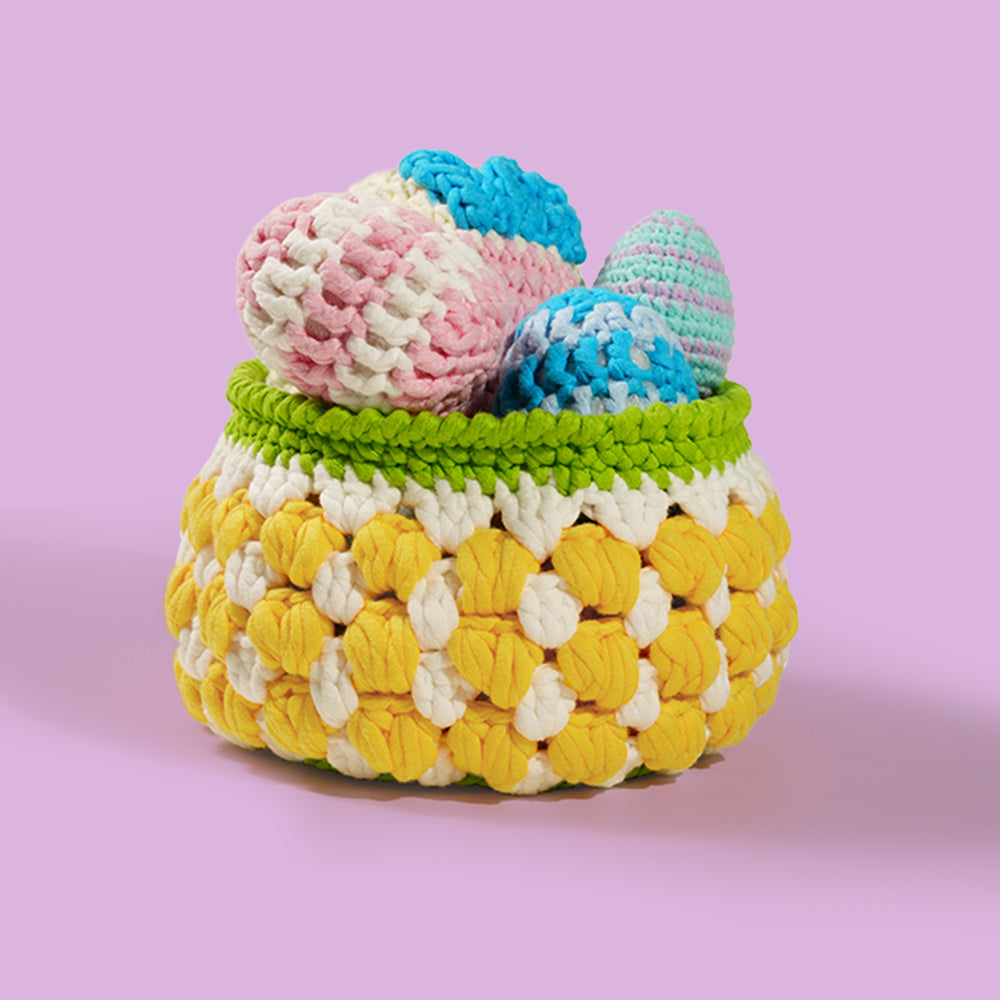What's the Difference Between Front Loop and Back Loop in Crochet?
Introduction
As you progress in your crochet journey, you’ll soon encounter patterns that call for stitches to be worked in the front loop only (FLO) or back loop only (BLO). These terms might seem technical at first, but they open up a world of textures, stretch, and structure in your work.
In this post, we’ll break down exactly what the front loop and back loop are, how to work into them, and how they can transform your crochet projects. Whether you're making a textured blanket or a stretchy brim on a hat, mastering loop placement will take your skills to the next level.
What Is the Front Loop in Crochet?
When you look at the top of a crochet stitch, you’ll see a sideways “V” shape made of two strands of yarn.
-
The front loop is the strand closest to you as you crochet.
-
It’s often abbreviated as FLO in patterns.
Working into the front loop means you insert your hook under only the front strand of the stitch instead of both loops.
What It Does:
-
Creates a subtle ridge on the back of the fabric
-
Adds drape and softness
-
Useful for decorative textures and shaping
What Is the Back Loop in Crochet?
The back loop is the strand that’s farthest away from you when you look at the top of a stitch.
When you insert your hook into the back loop only (BLO), you’re leaving the front loop untouched.
What It Does:
-
Creates a defined ridge on the front of the work
-
Adds elasticity and stretch
-
Great for ribbing, cuffs, and 3D structure
Step-by-Step: How to Crochet Into the Front or Back Loop
Standard Insert (Both Loops)
Before we dive in, remember that most basic stitches like single crochet or double crochet are made by inserting the hook under both loops. That creates a solid, flat fabric.
Working Into the Front Loop Only (FLO)
-
Yarn over (if needed) for your chosen stitch (e.g., single crochet).
-
Insert hook under the front loop only (the strand closest to you).
-
Complete the stitch as usual.
Use FLO when you want the back ridge to show on the reverse or when you need a subtle texture.
Working Into the Back Loop Only (BLO)
-
Yarn over (if needed).
-
Insert hook under the back loop only (the strand furthest from you).
-
Finish the stitch normally.
BLO creates a visible ridge on the front and increases flexibility—great for wearable projects.
What Can You Make with FLO and BLO?
Projects Using Back Loop Only (BLO)
-
Ribbing for hats, cuffs, socks
(The extra stretch is perfect for fitted items.) -
Dishcloths or washcloths
(Add a bit of texture for better scrubbing.) -
Amigurumi with dimension
(Use BLO to create shape or folds.) -
Textured bags and baskets
Projects Using Front Loop Only (FLO)
-
Decorative stripes or ridges
-
Soft-textured baby blankets
-
Petals or ruffles in floral patterns
-
Shaping in overlay crochet
Crochet Tips for Loop Placement
-
Mark your loops when learning: Use stitch markers to track which loop you’re working into until it becomes second nature.
-
Don’t tug too hard: Especially in BLO, pulling too tight can distort the shape of the stitches.
-
Try alternating loops: Combining BLO and FLO rows creates unique patterns and textures.
-
Swatch first: Not all yarns behave the same—do a quick sample if you’re unsure how your loops will affect drape or elasticity.
Frequently Asked Questions
Q: What’s the difference between working in the back loop and turning your work around?
A: Working in the back loop means you’re targeting a specific part of the stitch. Turning your work refers to starting a new row. They’re unrelated but often combined in flat pieces.
Q: Can I use BLO or FLO on any stitch?
A: Yes! Whether you’re using single crochet, half-double, or double crochet, you can modify any of them by choosing which loop to work into.
Q: Why does my BLO fabric look stretched?
A: BLO stitches naturally have more horizontal flexibility. If it’s too loose, try going down a hook size or adjusting your tension.
Q: How do I know which loop to use in the round?
A: In the round, your orientation may change. The loop facing outward from the center is often the back loop, but trust the pattern and double-check your work visually.
Q: Will using BLO or FLO affect stitch count?
A: Not at all. You’re still working one stitch per loop, so the stitch count remains unchanged. What changes is the texture and stretch of the fabric.
Final Thoughts
Learning how to use front loop and back loop stitches opens up a whole new world of creativity in crochet. These simple variations can dramatically change the look and feel of your project without changing the stitch type itself.
-
FLO offers soft texture and subtle shaping.
-
BLO adds dimension, flexibility, and strong ridges.
Whether you're following a pattern or designing your own, knowing when and why to use FLO or BLO helps you create intentional texture, movement, and structure in every project. Don’t be afraid to experiment—with just a shift of your hook, you can completely transform your fabric!
